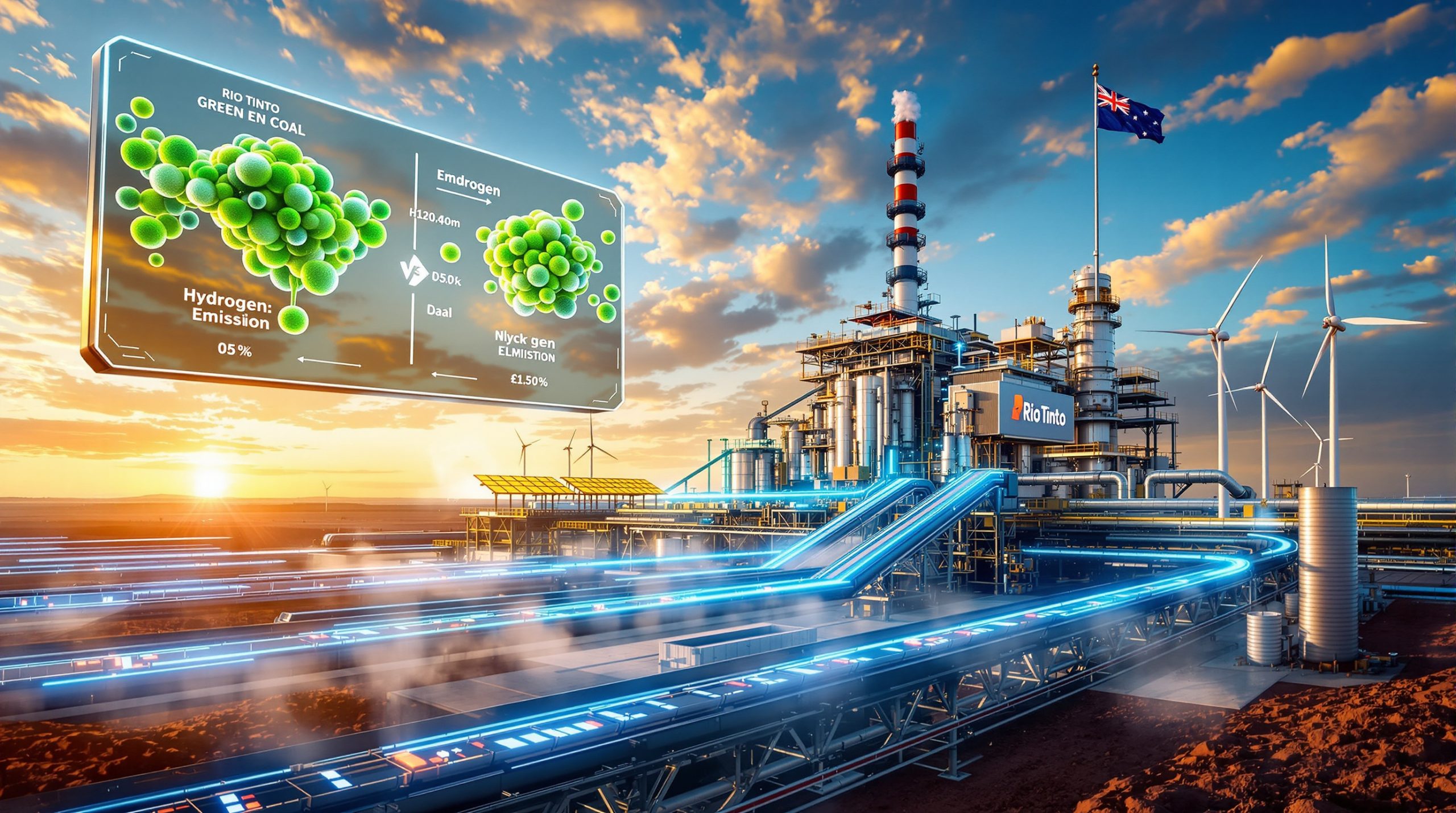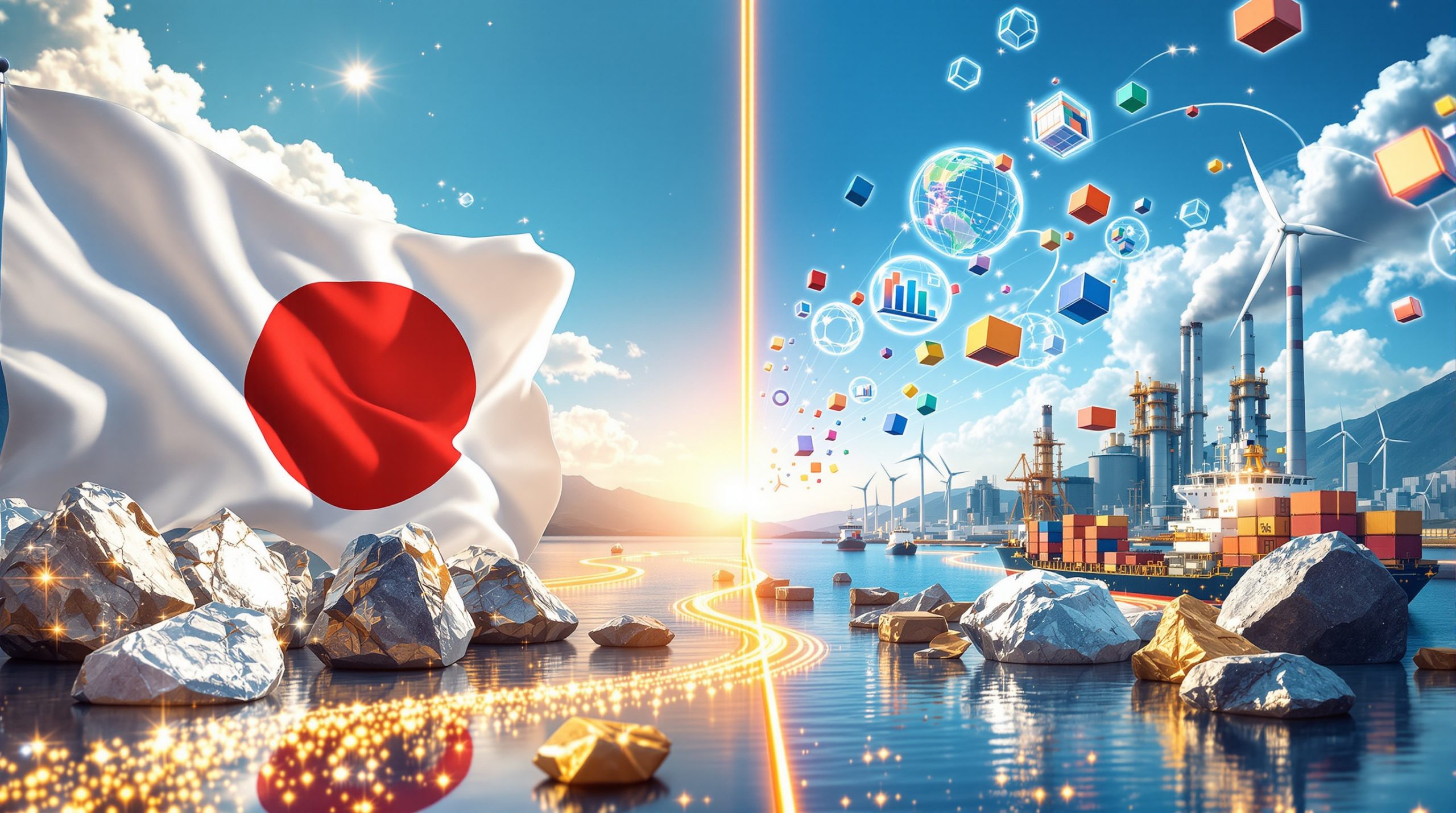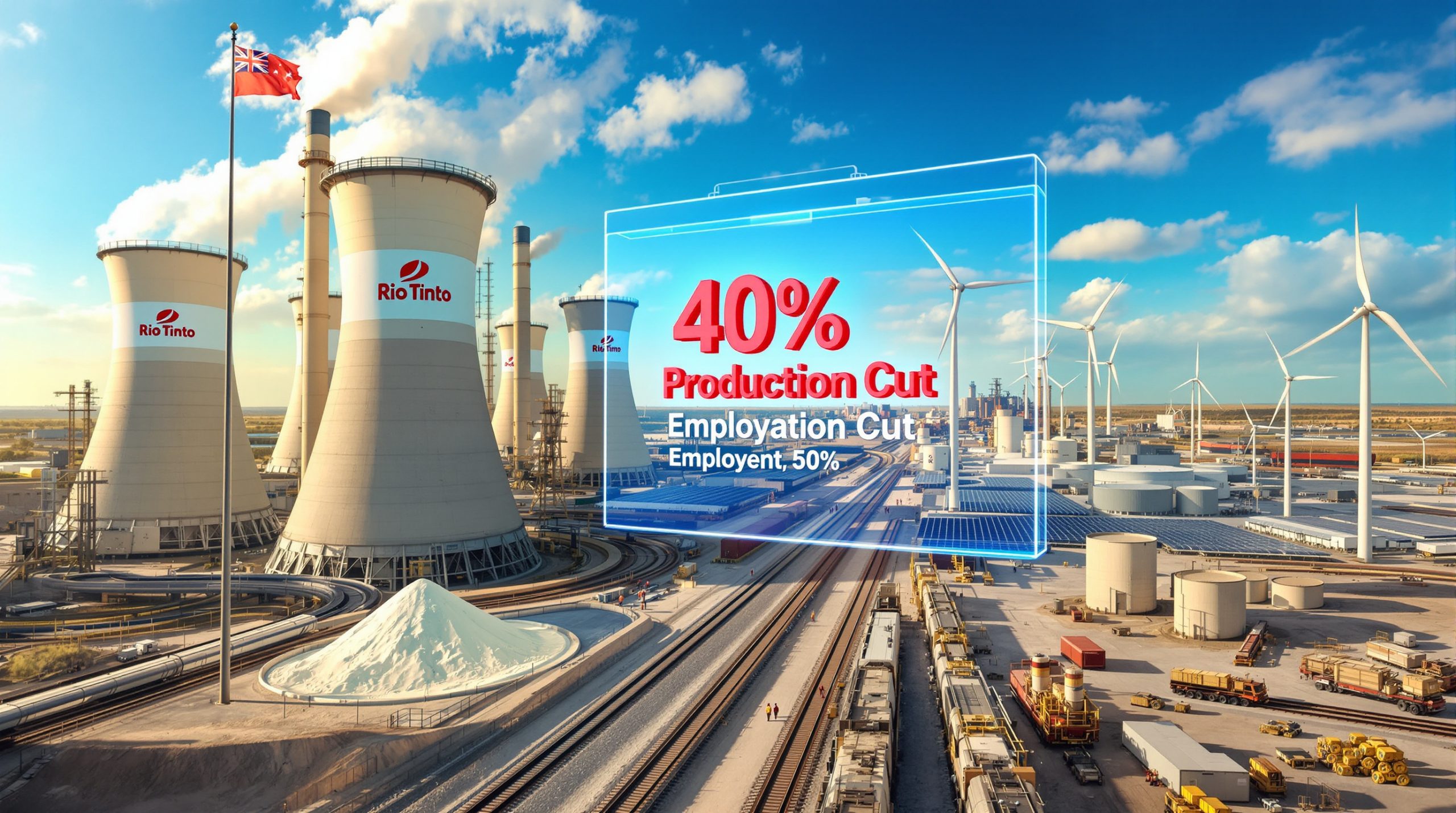Understanding Industrial Decarbonisation in Heavy Manufacturing
The global steel industry faces unprecedented pressure to reduce carbon emissions while maintaining production capacity to meet growing demand. Traditional ironmaking processes, which have remained largely unchanged for over a century, contribute approximately 7-9% of global fossil fuel emissions through their reliance on coking coal and blast furnace technology. This environmental challenge has catalysed a new generation of clean technology investments across the mining and metals sector, particularly as companies explore the Rio Tinto low-CO2 iron plant and similar initiatives.
Advanced economies worldwide are implementing increasingly stringent carbon pricing mechanisms, while major industrial purchasers demand certified low-carbon steel for their supply chains. Against this backdrop, mining companies are diversifying their technology portfolios to capture value across multiple segments of the emerging green steel ecosystem.
The transition toward hydrogen-based reduction processes represents one of several competing pathways for industrial decarbonisation. These technologies promise to decouple iron ore reduction from fossil fuel combustion while maintaining operational flexibility for variable renewable energy integration.
Hydrogen Direct Reduction Versus Traditional Blast Furnace Operations
Conventional blast furnaces operate through carbon-based reduction, where coking coal serves as both fuel and reducing agent. This process generates approximately 2.0-2.3 tonnes of CO2 per tonne of iron produced, with emissions embedded throughout the value chain from coal preparation to iron output.
Hydrogen-based direct reduction fundamentally alters this equation by substituting renewable hydrogen for carbon-based reductants. The process chemistry involves hydrogen molecules bonding with oxygen in iron ore, producing water vapour rather than carbon dioxide as the primary byproduct.
Key Process Efficiency Metrics:
• Calix Zesty Technology: 54 kilograms of hydrogen per tonne of iron
• Fortescue's Expected Rate: 51 kilograms of hydrogen per tonne of iron
• Industry Range: Most emerging H2-DRI technologies consume 51-60 kg hydrogen per tonne
• Source: Argus Media reports, November 18, 2025
| Reduction Method | CO2 Emissions per Tonne | Primary Energy Source | Ore Requirements |
|---|---|---|---|
| Blast Furnace (Coal/Coke) | 2.0-2.3 tonnes | Fossil fuels | High-grade pellets |
| Natural Gas DRI | 1.4-1.6 tonnes | Natural gas | Pelletized ore |
| Hydrogen Direct Reduction | Near-zero | Renewable electricity | Variable grades including fines |
The hydrogen pathway offers several operational advantages beyond emissions reduction. Unlike conventional DRI processes that require pelletized ore, hydrogen-based systems can accommodate lower-grade fines and various ore types without expensive preprocessing. This flexibility reduces upstream capital requirements while expanding the range of economically viable ore bodies.
Electric heating combined with hydrogen reduction minimises energy losses compared to traditional fuel-fired furnaces. The system design enables operation with intermittent renewable energy sources, allowing facilities to schedule production around optimal renewable energy availability and grid pricing.
Technical Architecture of Next-Generation Iron Production
Rio Tinto's A$35 million investment in Calix represents a calculated entry into hydrogen-based iron production through the Zero Emissions Steel Technology demonstration plant. The facility targets 30,000 tonnes per year of combined hydrogen direct reduced iron (H2-DRI) and hot briquetted iron (HBI) production at the Kwinana site in Western Australia.
Investment Structure Breakdown:
• Cash Component: A$8 million
• Raw Material Supply: 10,000 tonnes of Pilbara iron ore
• Additional Support: In-kind technical and operational assistance
• Grant Funding: A$45 million from Australian Renewable Energy Agency
• Source: Argus Media, November 18, 2025
The demonstration scale represents a strategic middle ground between pure research facilities (typically 1,000-5,000 tonnes per year) and full commercial operations (300,000+ tonnes per year). This capacity enables validation of process reliability, product quality consistency, and cost structures at near-commercial scale while minimising capital exposure during technology development.
Key Facility Design Elements
The Rio Tinto low-CO2 iron plant incorporates several innovative design features:
• Dual Product Streams: H2-DRI for immediate downstream processing and HBI for transport/storage
• Renewable Energy Integration: Designed for intermittent solar and wind power inputs
• Ore Flexibility: Processes multiple ore grades including lower-grade fines
• Infrastructure Efficiency: Eliminates coking coal preparation and pelletizing requirements
The Kwinana location leverages Western Australia's renewable energy potential and existing industrial infrastructure. The site provides direct port access for export markets while benefiting from established utilities and logistics networks. This strategic positioning reduces auxiliary infrastructure costs while enabling efficient raw material supply from Rio Tinto's Pilbara operations.
Technology Portfolio Strategy and Risk Distribution
Rio Tinto's approach to green iron technology reflects sophisticated risk management through parallel development of multiple technological pathways. The company maintains positions across different segments of low-carbon iron production, reducing dependence on any single technology achieving commercial viability on a specific timeline.
Multi-Technology Portfolio Overview:
| Initiative | Status | Annual Capacity | Energy Source | Partnership Structure |
|---|---|---|---|---|
| Zesty (Calix) | Active Development | 30,000 tonnes | Hydrogen + Electric | Direct Investment |
| BioIron | Design Phase | ~9,000 tonnes | Biomass + Microwave | Rio Tinto-Led |
| NeoSmelt Consortium | Active Development | 30,000-40,000 tonnes | Unspecified | Multi-Company |
The strategic pivot from biomass-based BioIron to hydrogen-focused Zesty technology reflects evolving assessments of scalability constraints. Furthermore, these mining innovation trends highlight how companies are adapting their technology strategies. BioIron's reliance on biomass feedstock presents inherent limitations through sustainable supply availability and competing demands from energy and chemical industries.
BioIron Technology Constraints
The decision to pause BioIron development reflects several practical challenges:
• Biomass Supply Chain: Geographically limited and subject to competing industrial demands
• Scale Limitations: Original design targeted 1 tonne per hour production
• Technology Maturity: Microwave-based reduction less commercially validated than hydrogen pathways
• Site Allocation: Kwinana facility redirected to Zesty demonstration plant
Rio Tinto's participation in the NeoSmelt consortium creates potential vertical integration opportunities. The consortium's 30,000-40,000 tonne capacity DRI plant may further process iron produced by Calix, enabling Rio Tinto to capture value across multiple supply chain segments while diversifying operational risk.
Economic Framework for Green Steel Market Transformation
The transition to hydrogen-based iron production requires substantial upfront capital but offers compelling long-term operational economics. Traditional blast furnaces face increasing cost pressures from carbon pricing mechanisms, while green steel commands premium pricing in environmentally conscious markets.
Capital Investment Considerations
The economic framework for the Rio Tinto low-CO2 iron plant includes several advantages:
• Elimination of Coking Coal Infrastructure: Removes coal preparation, storage, and handling facilities
• Simplified Ore Processing: Reduced pelletizing requirements lower upstream capital needs
• Renewable Energy Integration: Enables participation in grid flexibility markets
• Carbon Credit Revenue: Potential income streams from verified emissions reductions
The Australian Renewable Energy Agency's A$45 million grant to Calix demonstrates government commitment to supporting clean technology development. This public funding reduces private sector risk while accelerating commercialisation timelines for emerging technologies.
Premium pricing for certified low-carbon steel creates market incentives for early technology adoption. Major automotive and construction companies increasingly specify low-carbon materials in procurement requirements, establishing demand signals for green steel production.
Market Pricing Dynamics:
• Green Steel Premium: 10-20% price advantage over conventional steel
• Carbon Cost Avoidance: Eliminates exposure to rising carbon prices
• Regulatory Compliance: Positions producers ahead of tightening emissions standards
• Supply Chain Integration: Enables participation in corporate sustainability initiatives
Regional Infrastructure Advantages for Clean Technology Deployment
Western Australia's renewable energy resources provide fundamental advantages for hydrogen-based iron production. The region combines abundant solar and wind resources with established mining infrastructure and port facilities optimised for bulk commodity exports.
Kwinana Site Strategic Advantages
The location offers multiple benefits that support Australia green metals leadership in the global market:
• Solar Resources: Consistent high-irradiance conditions for hydrogen production
• Wind Integration: Complementary wind patterns for continuous renewable supply
• Industrial Infrastructure: Existing utilities, waste management, and safety systems
• Port Access: Direct shipping capabilities for export markets
• Workforce Availability: Established industrial skills base and training facilities
Australia's broader energy transition creates synergies between different clean technology sectors. Large-scale hydrogen production for industrial applications benefits from economies of scale while supporting broader hydrogen economy development across transportation, chemicals, and power generation sectors.
The integration of renewable energy with industrial processes enables participation in grid stabilisation services. Hydrogen production facilities can provide demand flexibility, absorbing excess renewable generation during high-output periods while reducing consumption during grid constraints.
Commercial Deployment Timeline and Market Integration
The pathway from demonstration to commercial deployment requires systematic validation of technical performance, cost competitiveness, and market acceptance. Rio Tinto's investment strategy reflects industry-standard progression from proof-of-concept to full-scale operations.
Development Phase Timeline:
| Milestone | Target Date | Key Deliverables |
|---|---|---|
| Final Investment Decision | 2026 | Funding confirmation and construction authorisation |
| Demonstration Plant Operation | 2028 | Technical validation and process optimisation |
| Commercial Scale-Up | 2030-2032 | Full-scale production facility deployment |
| Market Integration | 2032+ | Supply chain integration and export markets |
The 2028 demonstration timeline aligns with broader industry development schedules for hydrogen-based technologies. This timeframe allows for parallel development of supporting infrastructure, including renewable hydrogen supply chains and downstream processing capabilities.
Critical Success Factors
For the Rio Tinto low-CO2 iron plant to achieve commercial viability, several key metrics must be met:
• Process Reliability: Achieving consistent uptime rates above 85%
• Product Quality: Meeting steel industry specifications for downstream processing
• Cost Competitiveness: Achieving production costs within 10-15% of conventional iron
• Supply Chain Integration: Establishing reliable hydrogen supply and product offtake agreements
Market integration requires coordination with downstream steel producers and end-user industries. The success of demonstration projects influences broader industry adoption rates and technology scaling decisions across the global steel sector.
Global Context and Competitive Technology Landscape
Rio Tinto's hydrogen-based iron initiative operates within a broader global transformation of steelmaking technologies. Major steel producers across Europe, Asia, and the Americas are pursuing similar decarbonisation strategies through different technological pathways.
However, the critical minerals energy transition creates unique opportunities for Australian companies to leverage their resource advantages.
International Green Steel Initiatives
The competitive landscape includes several regional approaches:
• European Projects: Focus on converting existing blast furnaces to hydrogen-based systems
• Asian Developments: Emphasis on large-scale hydrogen production and distribution
• North American Programs: Integration with renewable energy development and carbon capture
• Australian Approach: Leveraging renewable resources and mining expertise for export-oriented production
The competitive landscape includes multiple technology developers pursuing different approaches to low-carbon iron production. Some focus on retrofitting existing facilities, while others develop greenfield projects optimised for hydrogen-based processes.
Australia's strategic advantages include abundant renewable energy resources, established mining expertise, and proximity to major Asian steel markets. These factors position Australian producers to capture early market share in the emerging green iron trade.
Technology Differentiation Factors
Several elements distinguish different hydrogen-based iron production approaches:
• Hydrogen Efficiency: Lower consumption rates per tonne of iron produced
• Ore Flexibility: Ability to process various ore grades and types
• Renewable Integration: Designed for intermittent renewable energy sources
• Product Quality: Consistent specifications for downstream steel production
Risk Assessment and Market Challenges
The transition to hydrogen-based iron production faces several technical, economic, and market challenges that could impact project success and commercial viability. Understanding these risk factors enables more informed investment decisions and mitigation strategies.
Furthermore, mining sustainability trends suggest that companies must balance environmental goals with operational realities.
Technical Risk Factors
The development of hydrogen-based iron production faces several technical challenges:
• Hydrogen Supply Chain Development: Building reliable, cost-effective hydrogen production and distribution
• Process Scale-Up: Transitioning from demonstration to commercial production volumes
• Equipment Reliability: Achieving industrial-grade performance standards for continuous operation
• Product Consistency: Maintaining quality specifications across varying operational conditions
Market and Economic Challenges
Economic viability depends on addressing several market factors:
• Capital Intensity: High upfront investment requirements compared to conventional facilities
• Technology Competition: Multiple competing pathways for low-carbon iron production
• Regulatory Uncertainty: Evolving carbon pricing and environmental regulations
• Market Acceptance: Downstream industry adoption of premium-priced green iron products
The hydrogen cost trajectory represents a critical variable for project economics. Current renewable hydrogen production costs remain above fossil fuel alternatives, though declining renewable energy prices and improving electrolyser efficiency support favourable long-term trends.
Economic Sensitivity Analysis:
• Hydrogen Price Elasticity: 10% hydrogen cost reduction improves project returns by 3-5%
• Carbon Price Upside: Higher carbon prices improve relative competitiveness
• Steel Price Premiums: Green steel pricing premiums directly impact project viability
• Renewable Energy Costs: Lower renewable electricity costs improve hydrogen production economics
What Are the Long-Term Industry Transformation Implications?
The success of Rio Tinto's low-CO2 iron plant initiative extends beyond individual project returns to influence broader steel industry evolution. Demonstration of commercially viable hydrogen-based iron production could accelerate technology adoption across global steelmaking operations.
Additionally, the development of green iron project initiatives worldwide creates a competitive landscape that rewards early adopters with market advantages.
Market Transformation Indicators
Several factors indicate accelerating industry transformation:
• Supply Chain Pressure: Increasing demand for certified low-carbon steel from automotive and construction sectors
• Regulatory Tightening: Stricter emissions standards and carbon pricing mechanisms
• Investment Capital Flow: Growing allocation of capital toward clean industrial technologies
• Technology Maturation: Improving cost competitiveness and operational reliability of hydrogen-based processes
The steel industry's decarbonisation timeline influences broader industrial transformation patterns. Success in iron production provides technology and operational insights applicable to other emissions-intensive industries, including cement, chemicals, and aluminium production.
Strategic Investment Considerations
For investors and industry participants, several strategic factors merit consideration:
• Technology Portfolio Diversification: Balancing investments across multiple decarbonisation pathways
• Market Timing: Positioning for early adoption advantages while managing technology risk
• Supply Chain Integration: Capturing value across multiple segments of the green steel ecosystem
• Regional Advantages: Leveraging local renewable energy resources and industrial infrastructure
The emergence of green steel certification systems and carbon accounting frameworks creates new market structures that reward early technology adoption. Companies establishing positions in low-carbon iron production benefit from preferential access to premium market segments.
Investment Disclaimer: This analysis involves forward-looking projections and emerging technology assessments. Actual results may vary significantly from discussed scenarios due to technical, market, and regulatory uncertainties. Readers should conduct independent due diligence before making investment decisions based on this information.
The transformation of steel industry production methods represents both significant opportunity and substantial risk for mining companies, technology developers, and downstream industrial users. Rio Tinto's multi-pathway approach to green iron technology provides a framework for managing technological uncertainty while positioning for market opportunities in the evolving low-carbon economy.
Looking to Capitalise on Green Steel Industry Transformation?
Discovery Alert's proprietary Discovery IQ model delivers instant alerts on significant ASX mineral discoveries, including emerging opportunities in the green metals and clean technology sectors transforming the mining industry. Stay ahead of market developments by exploring Discovery Alert's dedicated discoveries page, showcasing historic examples of exceptional returns from major mineral discoveries, and begin your 30-day free trial today to position yourself at the forefront of the evolving low-carbon economy.




